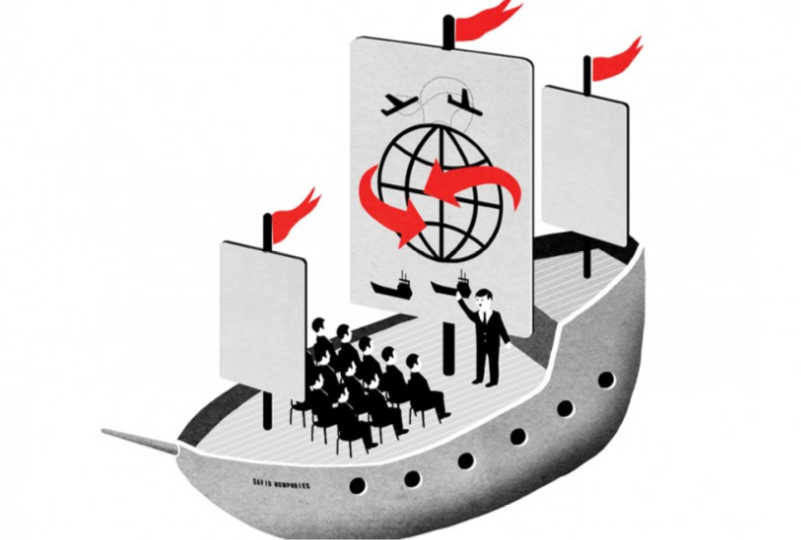
Germán Muñoz says as China revives Silk Road links, the 16th-century ‘Silver Way’ offers a template for enhanced multilateral cooperation, development and integration
President Xi Jinping’s “one belt, one road” initiative – a hugely ambitious attempt to link all of Eurasia via trade and transport infrastructure and procedures – has consolidated, among others things, the Silk Road Economic Belt and the 21st Century Maritime Silk Road. References to the Silk Road are not coincidental: they evoke a time that predates Western – first Spanish and Portuguese, then Anglo-Saxon – dominance of business, finance and trade, an arrangement that China, with reason, feels it is in its interest to recreate.
But China’s central role in international trade did not come to an end with the demise of the Silk Road that came with the fall of the Yuan dynasty. There was a successor trade route, initiated soon after, in 1565, that spanned the Pacific from Mexico to China and Asia, with Manila as a major entrepôt. So-called “Manila Galleons” carried silk, porcelain, tea and other Chinese and Asian goods to the New World and thence to Europe, while carrying back silver from the mines of Nueva España – New Spain, which became Mexico – silver that provided the money supply to fuel the Chinese economy.
So central was silver to this trade that, rather than considering it a latter-day Silk Road, we might instead call it “La Ruta de la Plata”, or “The Silver Way”. It was, however, very much a continuation of international trade, albeit in the opposite direction.
This year is in fact the bicentennial of the last sailing of the Manila Galleons or Nao de China and Nao de Acapulco as they were also known. But the trade did not end in 1815: this period coincided with the Mexican War of Independence. Following the establishment of the Mexican Republic, silver began to flow again in the form of the familiar Mexican “eagle” silver dollar until well into the 20th century.
The globalisation that is so much a feature of our world today – and the crucial underpinning of China’s recent re-emergence as a world power – dates from this period. The Silver Way was the Pacific leg of the first global trade route, extending to Mexico and thence to Spain and Europe; the crews were largely from Fujian . Goods and people from all corners of the globe were for the first time connected in a single global exchange.
The Spanish dollar, those so-called “pieces of eight”, beloved of traders as much as pirates, was succeeded by the Mexican eagle dollar: this was the world’s first global currency, the greenback of its day, accepted everywhere, and especially for trade within Asia and beyond. The yen, yuan and Hong Kong dollar were all based and modelled on the Mexican dollar.
Like the earlier Silk Road, places along the Ruta de la Plata prospered and added value. Manila was a key entrepôt (the famous Spanish shawls known as manton de Manila actually originated in Guangdong) and Mexico City was the period’s New York: the place where Europe, Africa, the New World and Asia all met and mingled – not just in trade goods, but also a melting pot of peoples – the first “world city” in fact.
China watchers might note that all of this took place before London, New York, Bretton Woods, the US dollar, World Bank or International Monetary Fund were even a gleam in anyone’s eye. The Ruta de la Plata, like the Silk Road before it, provides a sort of template for trading relationships that are not based on the Anglo-Saxon economic dominance resulting from the Industrial Revolution.
This Silver Way allows China, in other words, to add another notch to the “one belt” and an extension to “one road” so that it reaches all the way around the world, from Europe to the Americas with, this time, China once again at the centre.
Latin America is sometimes considered, not least by the United States itself, to be in a sort of US sphere of influence; but it was not always so. As recently as the time of Hong Kong’s founding, California, Texas and much of the territory in between was part of Mexico. Latin America’s relations with Asia are almost three centuries older than that. The first Chinese arrived in Mexico in 1635.
China’s operations along the Ruta de la Plata are likely to look much like those along the newly resuscitated Silk Roads. There will be an emphasis on transport links and infrastructure – there are already Chinese plans for a new canal through Nicaragua – as well as strategic alliances for access to rich markets, natural resources and increasingly sophisticated economies, Mexico among them.
History can provide lessons for the future and the legacy of La Ruta de la Plata has great potential – and not just in trade itself. It also provides a template, as do the Silk Roads, for enhanced multilateral cooperation, regional development and integration of Asia and Latin America.
Hong Kong, with pretensions to be Asia’s “world city”, has been woefully inattentive to the possibilities represented by Latin America in general and Mexico – its predecessor in this role – in particular. La Ruta de la Plata provides a paradigm not just for the reordering of Chinese-Latin American ties but also for Hong Kong’s leading role in these.
Germán Muñoz is president of the Mexican Chamber of Commerce in Hong Kong and director at the board of The Pacific Basin Economic Council


